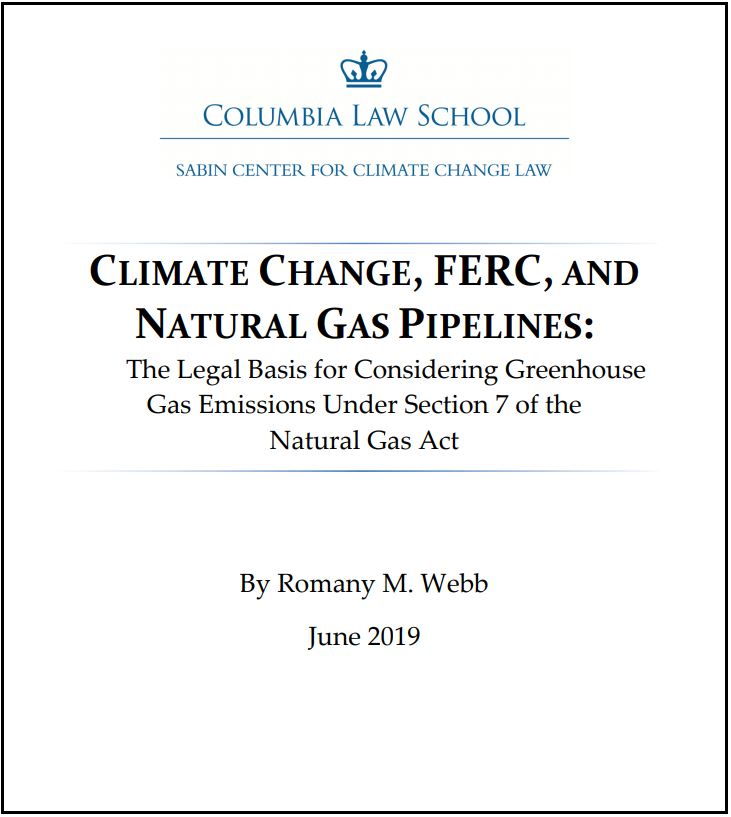By Romany Webb
 A new report from the International Energy Agency (IEA), published on March 31, shows that global methane emissions from the oil and gas sector increased by nearly four percent from 2018 to 2019. That trend could continue in 2020 and beyond due, in part, to the economic downturn resulting from the COVID-19 pandemic. While the downturn is widely expected to lead to a decline in carbon dioxide emissions, it could have the opposite effect on emissions of methane, with the IEA noting that lower oil and gas prices “could mean that producers pay less attention to efforts to tackle methane.” For example, oil producers will have less incentive to capture and sell associated natural gas, which is primarily methane, and may simply vent it to the atmosphere. Similarly, natural gas producers may put off fixing leaks because the cost of doing so now exceeds the value of the captured gas.
A new report from the International Energy Agency (IEA), published on March 31, shows that global methane emissions from the oil and gas sector increased by nearly four percent from 2018 to 2019. That trend could continue in 2020 and beyond due, in part, to the economic downturn resulting from the COVID-19 pandemic. While the downturn is widely expected to lead to a decline in carbon dioxide emissions, it could have the opposite effect on emissions of methane, with the IEA noting that lower oil and gas prices “could mean that producers pay less attention to efforts to tackle methane.” For example, oil producers will have less incentive to capture and sell associated natural gas, which is primarily methane, and may simply vent it to the atmosphere. Similarly, natural gas producers may put off fixing leaks because the cost of doing so now exceeds the value of the captured gas.
Ideally, regulation would operate as a backstop to prevent this type of environmentally damaging behavior, but that’s unlikely in this case. As I have previously written, there are currently few direct regulatory controls on methane emissions from oil and gas production at the federal level, and those that do exist are under attack from the Trump administration. While the administration has so far left in place other regulations, which indirectly address emissions from downstream operations (e.g., natural gas transport and storage), it is unlikely to strictly enforce them. Indeed, on March 20, the Pipeline and Hazardous Materials Safety Administration (PHMSA) announced that during the COVID-19 pandemic it will “exercise discretion in its overall enforcement of . . . [natural gas] pipeline safety regulations.” Those regulations include provisions governing pipeline leak detection and repair, which could be delayed as a result of PHMSA’s action, leading to higher methane emissions.
The Environmental Protection Agency estimates that the natural gas pipeline system (including gathering, transmission, and distribution) accounted for nearly 13 percent of national methane emissions in 2018. Most of those emissions were due to the leakage of natural gas from damaged and/or aging pipelines. (More information on the cause of leaks is provided in my previous post here.) Recent research indicates that, in some areas, pipeline leaks occur every mile (on average). That is not just bad for the environment, but also a threat to public safety, since leaking gas can trigger fires and explosions. Just last year, a leaking pipeline in Kentucky exploded, killing one person and injuring five others.
Recognizing this risk, and consistent with its statutory mandate to “meet the need for gas pipeline safety,” PHMSA has adopted regulations intended to ensure prompt detection of leaks. Under the regulations, pipeline operators must conduct periodic leak patrols during which the pipeline system is visually inspected for signs of gas leakage, such as changes in vegetation and heavy insect activity, both of which can indicate the presence of natural gas. These visual inspections are supplemented with leak surveys, in which flame ionization devices or other equipment are used to detect gas in the air.
The frequency at which patrols and surveys must be conducted depends on the nature of the pipeline system and the risks it poses to public safety. Transmission pipelines, which move natural gas from field production and processing areas to large volume customers and local utilities, are generally considered to present the greatest risk because they carry large amounts of gas at high pressure. As such, the PHMSA regulations require transmission pipelines to be inspected more frequently than the smaller, lower-pressure distribution pipelines that deliver gas to end-consumers.
The PHMSA regulations require both transmissions and distribution pipelines in built-up areas to be inspected more frequently than those in less populated areas. For example, distribution pipelines located in business districts must be surveyed annually, whereas five yearly surveys are allowed for distribution lines in most other areas. Consequently, pipeline leaks in those areas may go undetected for months or even years, during which time significant amounts of methane may be released. As I have previously written, that is a major flaw in the regulations, which limit their effectiveness in controlling methane emissions. They are, however, the only federal controls presently available and PHMSA is proposing not to use them.
In its “Notice of Enforcement Discretion to Operators Affected by the Coronavirus (COVID-19) Outbreak,” PHMSA committed to providing “flexibility” to pipeline operators facing “compliance challenges” due to the pandemic. To that end, PHMSA pledged to “exercise discretion” in enforcing its pipeline safety regulations, suggesting that it might allow operators to postpone or even skip required pipeline patrols and surveys, thereby delaying leak detection and repair.
It should be noted that pipeline operators would still have to comply with any applicable state-imposed leak detection requirements. Under the Natural Gas Pipeline Safety Act, states can impose additional or more stringent requirements (i.e., than those in the federal regulations) on certain pipeline operators. Unfortunately, however, most have not done so with respect to leak detection. A 2015 study found that just 18 states and the District of Columbia had rules governing the frequency of pipeline patrols and surveys. Moreover, even where such rules exist, they only apply to pipelines located entirely within the boundaries of the relevant state (intrastate) pipelines. Other (interstate) pipelines are not subject to state regulation. This makes enforcement of the federal regulations all the more important. They are, in many cases, the only backstop to prevent pipeline operators ignoring leaks and thus avoid a spike in methane emissions.
Romany Webb is a Research Scholar at Columbia Law School, Adjunct Associate Professor of Climate at Columbia Climate School, and Deputy Director of the Sabin Center for Climate Change Law.



